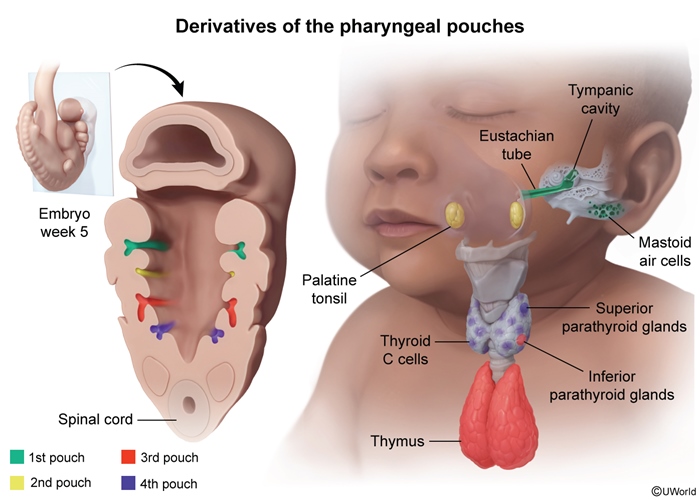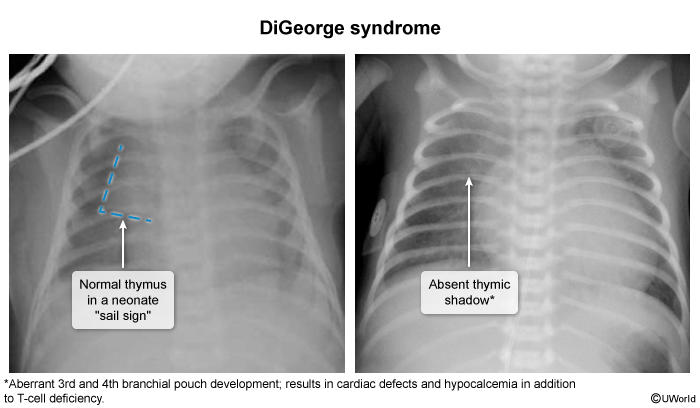DiGeorge (22q11.2 Deletion) Syndrome
Article Sections
Introduction
DiGeorge syndrome is associated with abnormal development of the third and fourth pharyngeal pouches (Figure 1). As a result, patients are at risk for immunodeficiency from thymic hypoplasia, hypocalcemia from parathyroid hypoplasia, cardiac defects, and facial deformities. The majority of cases are caused by a heterozygous chromosome 22q11.2 microdeletion, making it the most common microdeletion syndrome with an estimated incidence of 1 in 4,000 live births.
Pathogenesis and risk factors
Many head and neck tissues are derived from the pharyngeal apparatus, an early embryological structure that consists of pharyngeal arches, pouches, and clefts. Any disruption in the development of the third and fourth pharyngeal pouches (eg, genetic mutation, teratogen exposure) can result in DiGeorge syndrome. The most common cause is a chromosome
Continue Learning with UWorld
Get the full DiGeorge (22q11.2 Deletion) Syndrome article plus rich visuals, real-world cases, and in-depth insights from medical experts, all available through the UWorld Medical Library.
Figures

Images
